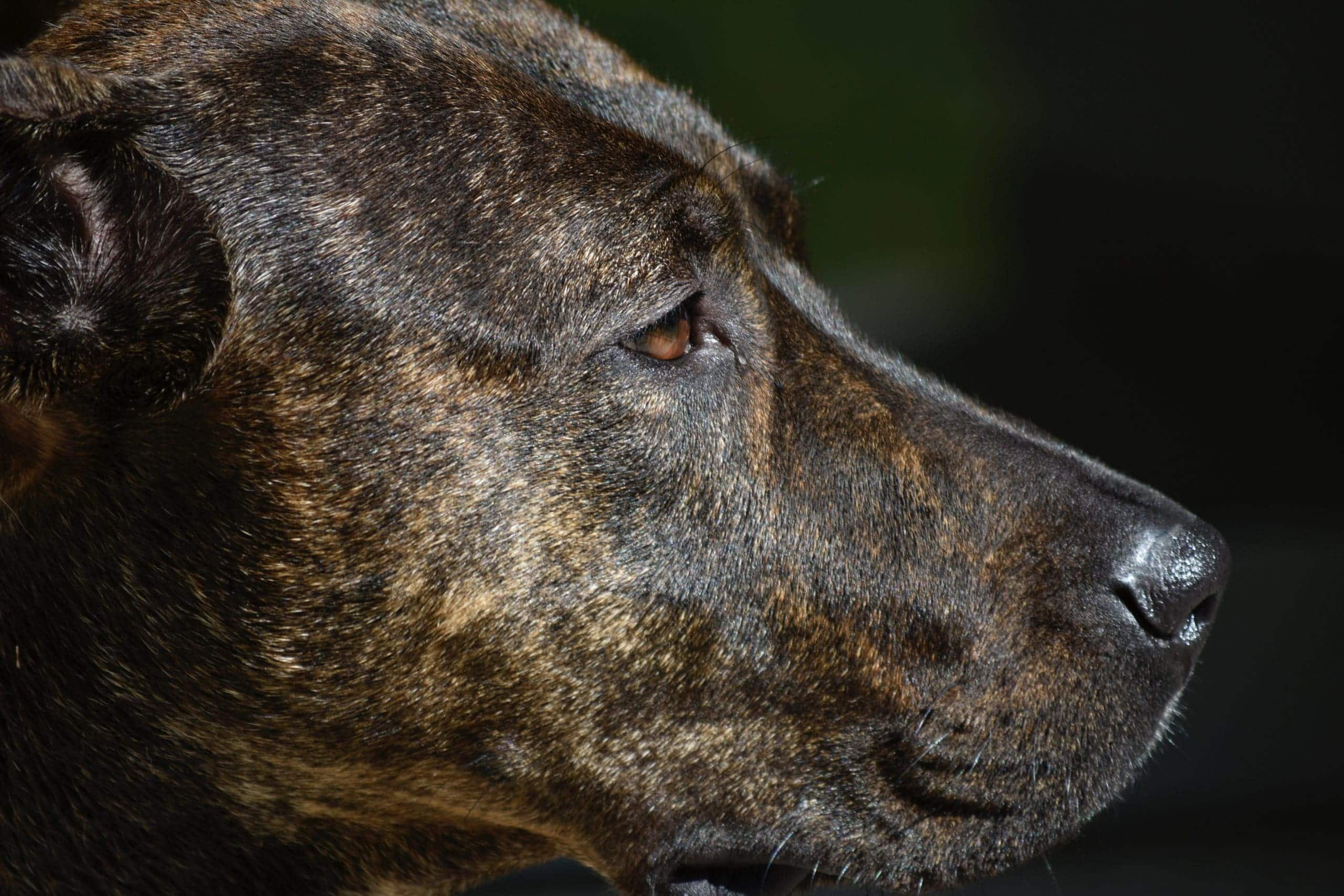How To Treat Cherry Eye In Dogs Without Surgery?
Post Date:
December 10, 2024
(Date Last Modified: November 13, 2025)
Cherry eye is a condition in dogs where the gland of the third eyelid prolapses and becomes visibly swollen and red. Owners and caregivers can manage early recognition and short-term care while coordinating with a veterinarian for decisions about medical or surgical treatment.
Recognizing Cherry Eye
The hallmark sign is a pink to red, smooth, rounded mass at the inside corner (medial canthus) of the eye that is the displaced gland of the third eyelid. Typical accompanying features include irritation, increased blinking, and a mucous or serous discharge that may crust overnight.
- Visible third eyelid prolapse (a pink/red rounded mass)
- Localized redness and swelling at the medial canthus
- Thick mucous discharge or intermittent tearing
- Rubbing, squinting, or pawing at the affected eye
These signs can be confused with bacterial or viral conjunctivitis, traumatic conjunctival injury, or a conjunctival mass, but cherry eye is distinguished by its well‑defined glandular appearance and fixed location on the third eyelid. Most cases present in dogs younger than 2 years, which helps differentiate congenital or developmental prolapse from other causes of red eye [1].
Causes and Risk Factors
Cherry eye occurs when the connective tissues that normally hold the third‑eyelid gland in place weaken or fail, allowing the gland to flip outward; anatomically the gland sits along the T‑shaped cartilage of the third eyelid and relies on multiple attachment points for stability. Certain breeds with genetic predisposition and loose periorbital tissues are at higher risk, with many typical cases noted in spaniels, bulldogs, and terrier types. Traumatic events or local inflammation can contribute to gland detachment or make an existing weakness clinically apparent, and bilateral involvement may develop over time in predisposed animals.
When to See a Veterinarian
Prompt veterinary assessment clarifies whether medical management is appropriate and identifies red flags that require urgent care. If the eye shows sudden severe swelling, purulent discharge, obvious pain, or vision impairment, seek veterinary attention within 24 to 48 hours for examination and treatment [2].
During a typical exam the veterinarian will assess the eyelids and conjunctiva, perform Schirmer tear testing to evaluate tear production when indicated, stain the cornea with fluorescein to rule out ulceration, and may collect a conjunctival cytology or culture if infection is suspected. Owners should be prepared to provide onset timing, any recent trauma or insect exposure, prior episodes, and notes on whether both eyes are affected or only one.
Non‑Surgical Treatment Options Overview
Conservative strategies aim to reduce inflammation, control or prevent secondary infection, and preserve gland function while avoiding immediate surgical risks. Non‑surgical care is most appropriate for recent, uncomplicated prolapses and when the goal is to reduce swelling before attempting gland replacement; it is less likely to succeed for long‑standing, scarred, or repeatedly recurrent prolapses.
Initial medical therapy typically combines topical anti‑inflammatory and antibiotic agents plus lubrication; these are commonly applied 3 to 4 times daily with reassessment after 7 to 14 days to determine whether the gland has reduced in size or can be manually repositioned [3]. If the gland remains prolapsed, recurs repeatedly, or if secondary dry eye develops, surgical options that preserve the gland are recommended to avoid long‑term tear deficiency.
Topical Medical Treatments
Topical medications are the core of conservative management because they act directly at the site. Typical choices include topical broad‑spectrum antibiotics to prevent or treat superficial infection, topical anti‑inflammatory agents (either corticosteroids or non‑steroidal anti‑inflammatory drops) to reduce swelling, and lubricating/artificial tear drops to protect the cornea and keep the conjunctiva moist.
Application frequency in practice often follows these ranges: topical antibiotics 2 to 3 times daily, topical corticosteroids 2 to 4 times daily (used only under veterinary direction), and lubricating drops 3 to 6 times daily to maintain comfort and corneal health [4]. Owners should be shown proper drop administration technique, how to avoid contaminating the bottle tip, and instructed to stop steroid use immediately and contact the clinic if corneal ulceration is suspected.
Medication‑related adverse effects to watch for include increased corneal ulceration risk with topical steroids, local irritation or allergic response, and lack of clinical improvement suggesting resistant infection or a non‑infectious inflammatory process; any of these outcomes require prompt veterinary reassessment.
Systemic and Adjunctive Therapies
Oral medications are added when there is significant periocular inflammation, systemic infection risk, or when topical therapy alone is inadequate. Oral NSAIDs or other anti‑inflammatories may be prescribed to reduce discomfort and swelling, and systemic antibiotics are used when there is evidence of spreading or deep infection.
When dosing liquid oral medications, calculate the administered volume per body weight using mL/kg/day for accuracy: Dose (mL/kg/day) = (target mg/kg/day) ÷ (concentration mg/mL). For example, a 100 mg/5 mL suspension (20 mg/mL) given to achieve 10 mg/kg/day requires 0.5 mL/kg/day (10 ÷ 20 = 0.5) [5]. Adjunctive measures such as topical cyclosporine or tacrolimus may be advised long‑term when immune‑mediated inflammation or allergic disease contributes to recurrent prolapse.
Systemic therapy is contraindicated or used cautiously in animals with gastrointestinal disease, known drug sensitivities, or certain organ dysfunction; routine monitoring (bloodwork) is often recommended for extended courses of systemic anti‑inflammatories or immunomodulators.
Manual Replacement and Temporary Measures
In some cases a veterinarian or trained technician can perform gentle manual replacement (digital reduction) of the prolapsed gland back into the conjunctival pocket as a temporary measure; this should be done with topical lubrication and preferably under mild sedation, and always followed by a plan for follow‑up care. Manual replacement is a bridge measure because the underlying support failure usually predisposes to recurrence unless surgical stabilization is performed.
Temporary measures that protect the eye at home include an Elizabethan collar (to prevent rubbing), frequent lubrication, and short‑term topical medication while arranging a veterinary appointment. Some clinics may offer temporary tacking sutures or a mattress suture to hold the gland in place as a short‑term fix; these techniques are intended to be temporary or to stabilize tissue pre‑operatively. Repeated, forceful manipulation by untrained owners risks gland damage, inflammation, or conjunctival tears and should be avoided.
Supportive Home Care and Prevention
Daily cleaning of periocular discharge with sterile saline or a recommended ophthalmic cleanser reduces local irritation; use clean cotton or gauze and wipe from the inner corner outward. Lubrication with preservative‑free artificial tears helps the cornea and conjunctiva, with application schedules commonly prescribed in the range noted above for lubricants [4]. Prevent rubbing by using an Elizabethan collar until the pet learns not to paw at the eye.
For predisposed breeds, routine grooming to keep hair away from the eyes, limiting exposure to obvious irritants (smoke, strong sprays), and prompt treatment of any conjunctivitis episodes reduce the risk of inflammation that can precipitate a prolapse. Keeping a simple treatment log noting daily medications, observed discharge, and any rubbing can help the clinic judge progress at recheck visits.
Monitoring, Complications, and Criteria for Surgery
Track the gland’s size, discharge character, and any change in blinking or squinting; photographic documentation can help objective reassessment. If the prolapse persists beyond 2 to 4 weeks of appropriate conservative care or if the gland repeatedly recurs after manual replacement, surgical referral for gland‑sparing fixation is typically recommended to preserve tear production and reduce long‑term risk of dry eye [6].
Complications to monitor for include chronic conjunctivitis, corneal ulceration from ongoing irritation, and gland atrophy leading to tear deficiency (keratoconjunctivitis sicca). Surgical techniques that reposition and anchor the gland (such as pocket or anchoring procedures) aim to retain gland function and are favored over gland excision, which can lead to dry eye in a measurable percentage of cases when the gland is removed.
| Measure | Typical frequency | Reassessment | Primary goal |
|---|---|---|---|
| Topical antibiotic | 2–3× daily [4] | 7–14 days | Control/ prevent infection |
| Topical anti‑inflammatory | 2–4× daily [4] | 7–14 days | Reduce swelling |
| Lubricant drops | 3–6× daily [4] | Daily logging | Protect cornea |
| Manual replacement (vet) | Single attempt, may repeat once | 24–72 hours for stability | Restore anatomy temporarily |
Sources
- merckvetmanual.com — veterinary reference and clinical overview.
- vcahospitals.com — client and clinician guidance on eye emergencies.
- aaha.org — professional recommendations on ophthalmic management and recheck intervals.
- wsava.org — global statements and best practices for topical ophthalmic therapy.
- avma.org — dosing principles and safe medication handling recommendations.
- ncbi.nlm.nih.gov — peer‑reviewed literature on outcomes and surgical indications.






